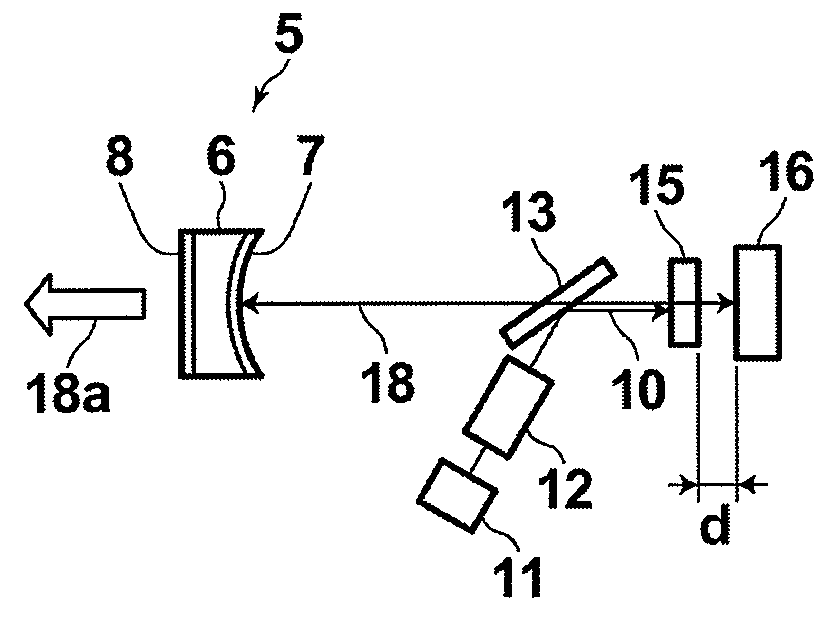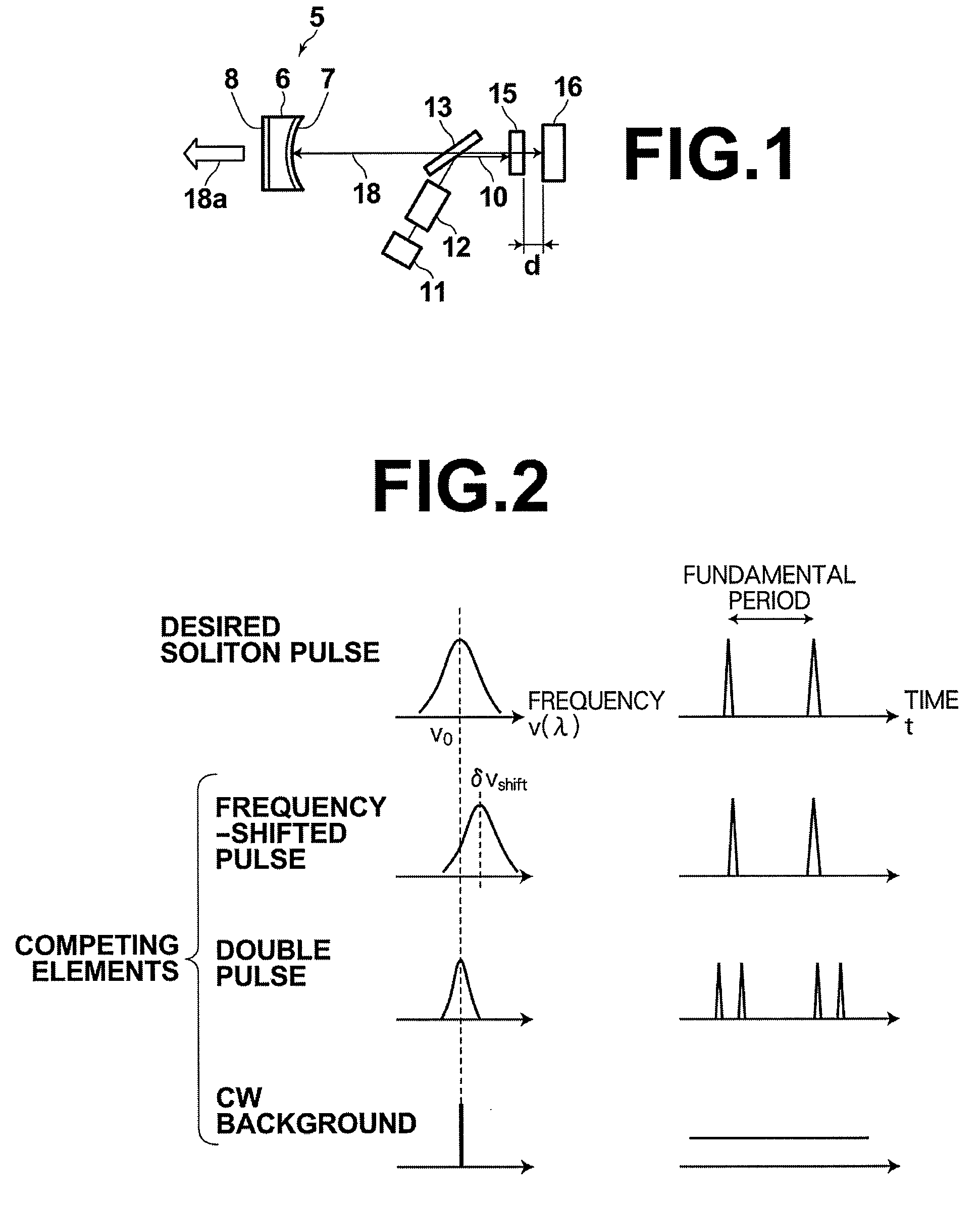Mode-locked solid-state laser apparatus
a laser apparatus and mode lock technology, applied in the direction of laser details, instruments, optical resonator shape and construction, etc., can solve the problems of difficult stably operating solid-state laser apparatuses containing one-meter class resonators, undesirable q-switched mode locking applications, etc., to achieve stable soliton-mode oscillation and operation. stab
- Summary
- Abstract
- Description
- Claims
- Application Information
AI Technical Summary
Benefits of technology
Problems solved by technology
Method used
Image
Examples
Embodiment Construction
ical thicknesses of the films constituting a concrete example 4 of a negative-dispersion mirror.
[0100]FIG. 16B is a diagram indicating the reflectance and the dispersion in the concrete example 4 of the negative-dispersion mirror.
[0101]FIG. 17A is a diagram indicating the optical thicknesses of the films constituting a concrete example 5 of a negative-dispersion mirror.
[0102]FIG. 17B is a diagram indicating the reflectance and the dispersion in the concrete example 5 of the negative-dispersion mirror.
[0103]FIG. 18A is a diagram indicating the optical thicknesses of the films constituting a concrete example 6 of a negative-dispersion mirror.
[0104]FIG. 18B is a diagram indicating the reflectance and the dispersion in the concrete example 6 of the negative-dispersion mirror.
[0105]FIG. 19A is a diagram indicating the optical thicknesses of the films constituting a concrete example 7 of a negative-dispersion mirror.
[0106]FIG. 19B is a diagram indicating the reflectance and the dispersion...
PUM
 Login to View More
Login to View More Abstract
Description
Claims
Application Information
 Login to View More
Login to View More - R&D
- Intellectual Property
- Life Sciences
- Materials
- Tech Scout
- Unparalleled Data Quality
- Higher Quality Content
- 60% Fewer Hallucinations
Browse by: Latest US Patents, China's latest patents, Technical Efficacy Thesaurus, Application Domain, Technology Topic, Popular Technical Reports.
© 2025 PatSnap. All rights reserved.Legal|Privacy policy|Modern Slavery Act Transparency Statement|Sitemap|About US| Contact US: help@patsnap.com



